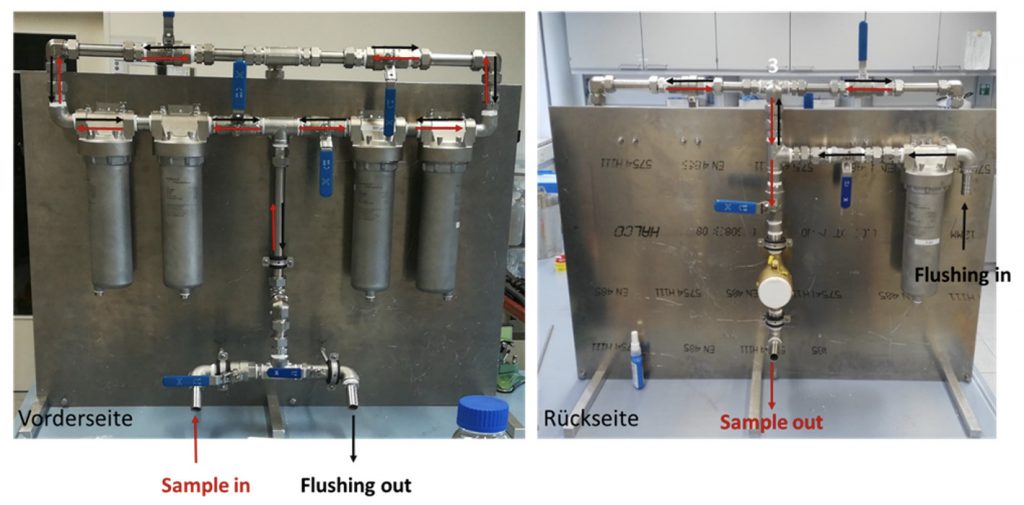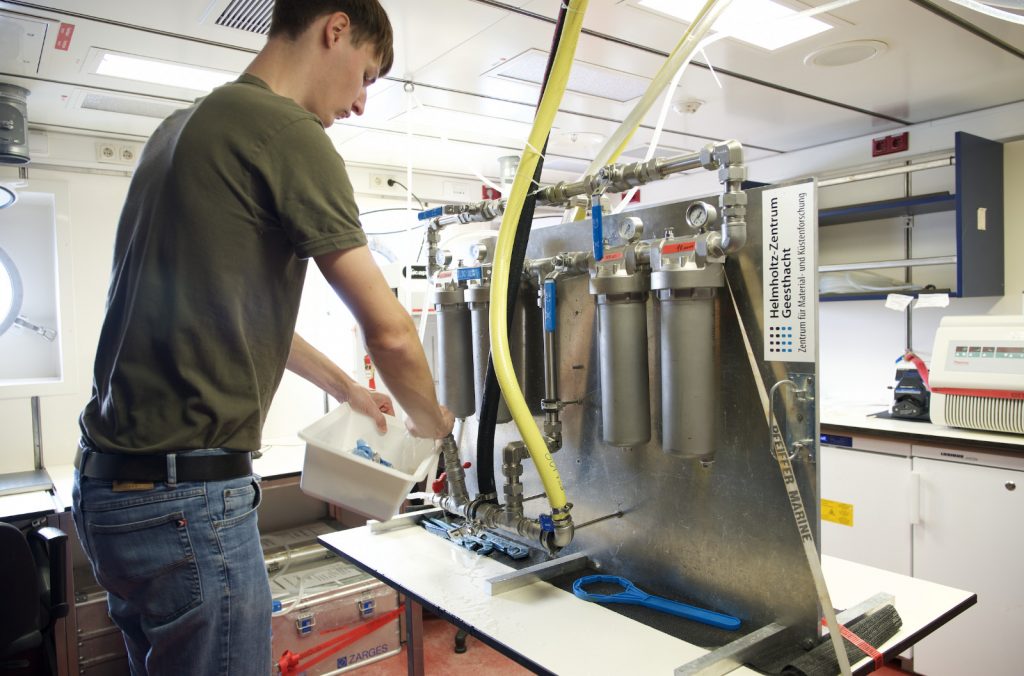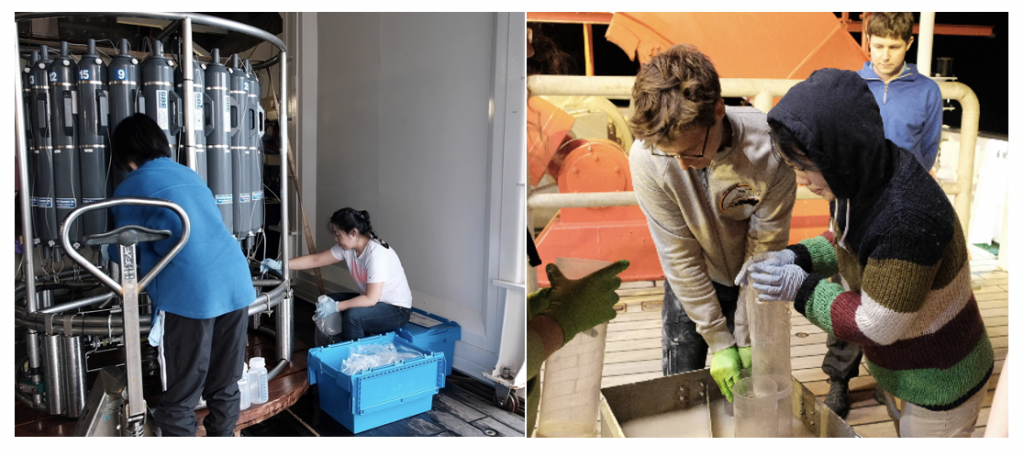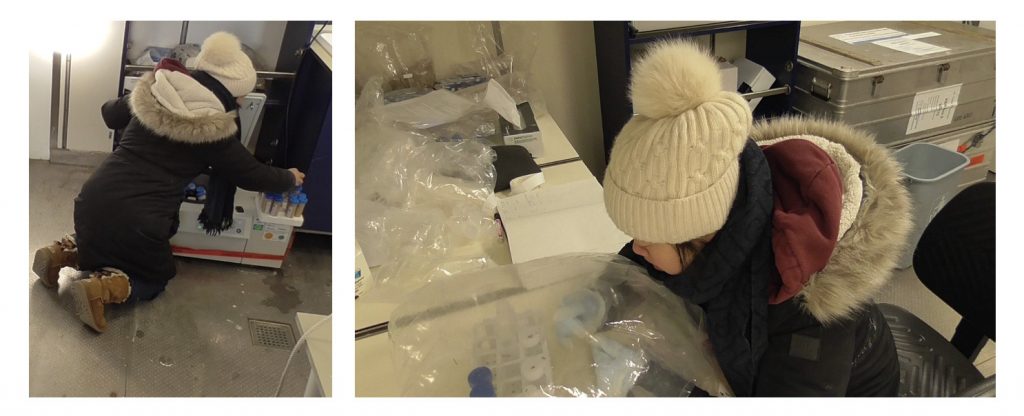*HZG: Helmholtz-Zentrum Geesthacht, Germany
New tools for sampling and analysis of microplastic
Apart from the primary plastics chasing activities using various types of nets on SO279, a group of three post-docs and PhD student from the Institute of Coastal Research, Helmholtz-Zentrum Geesthacht (HZG) are bringing something different to the expedition. As we are getting closer to finishing the cruise, it is time that we unravel what these different research activities from the HZG group has been doing during the cruise.
Scientists around the world dedicate their time and effort to a better understanding of microplastic pollution in the oceans. But in order to do so they need reliable analytical methods to sample and measure microplastics. Me and my colleagues at the Helmholtz-Zentrum Geesthacht are developing new approaches to sample microplastics, based on continuous flow centrifugation and fractionated filtration.

In the oceans, large plastic items are constantly degrading into smaller particles. Therefore, the majority of plastic particles in the ocean are very small, sometimes only 1/100 of a mm or even smaller. Because of their size, it can be difficult to get samples of these kind of particles. One new possibility is to use a centrifuge to extract even the smallest microplastics from seawater (Figure 1). In the centrifuge all particles, including mikroplastics, are separated from the water if their density lies above the density of seawater (1.025 g mL-1). Even plastics with lower density can be separated, if their density was increased by the formation of a so called “biofilm”. A process that is naturally accruing to almost all microplastics after some time in the ocean.
After successful sampling microplastics collected by the sieves can be further processed in a controlled environment. With a built in water meter the amount of filtrated water can be determined, which helps to provide precise data on microplastic concentrations (Figure 2 & 3).


by Tristan Zimmermann, Helmholtz-Zentrum Geesthacht, Germany
Understanding the geochemical behaviours of trace metals and their isotopes
Feifei Deng is currently a post-doctoral scientist at the Helmholtz-Zentrum Geesthacht, Germany. Her research interest is to understand the geochemical behaviours of trace metals and their isotopes, and to use them as a tool to understand climate change processes in the ocean. During the cruise, you can see here juggling between water and sediment sample collection. And it is not difficult to spot her on the cruise. If you ever see someone wearing thick winter jacket, sheep skin boots, hat and scarf while others are in T-shirts and shorts, that’s her.

Rumour goes that she has been secretly space traveling back and forth to the Arctic. But the truth is that she has been working in a laboratory with temperature set at 4oC. This is essential as her work in this laboratory is to process the sediment retrieved from the seafloor and this work needs to be done in an environment that is similar to where the sediment is lying at the seafloor. 4oC is approximately the temperature in the deep ocean of 4000~5000 m water depth in the investigated area.

Furthermore, O2 has to be avoided during the sediment sample processing as trace metals can be very sensitive to O2 levels. She therefore had to work in a glove bag pre-purged with N2 to remove O2 in the air. Figure 2 shows her working in the laboratory which might give you a better idea of her working conditions. Working in a laboratory at such low temperature and with the very limited space in a glove bag is not easy. However, she is expecting that the data produced from these samples will make it all worthwhile. This is her first time collecting sediment samples at sea.
by Feifei Deng, Helmholtz-Zentrum Geesthacht, Germany.